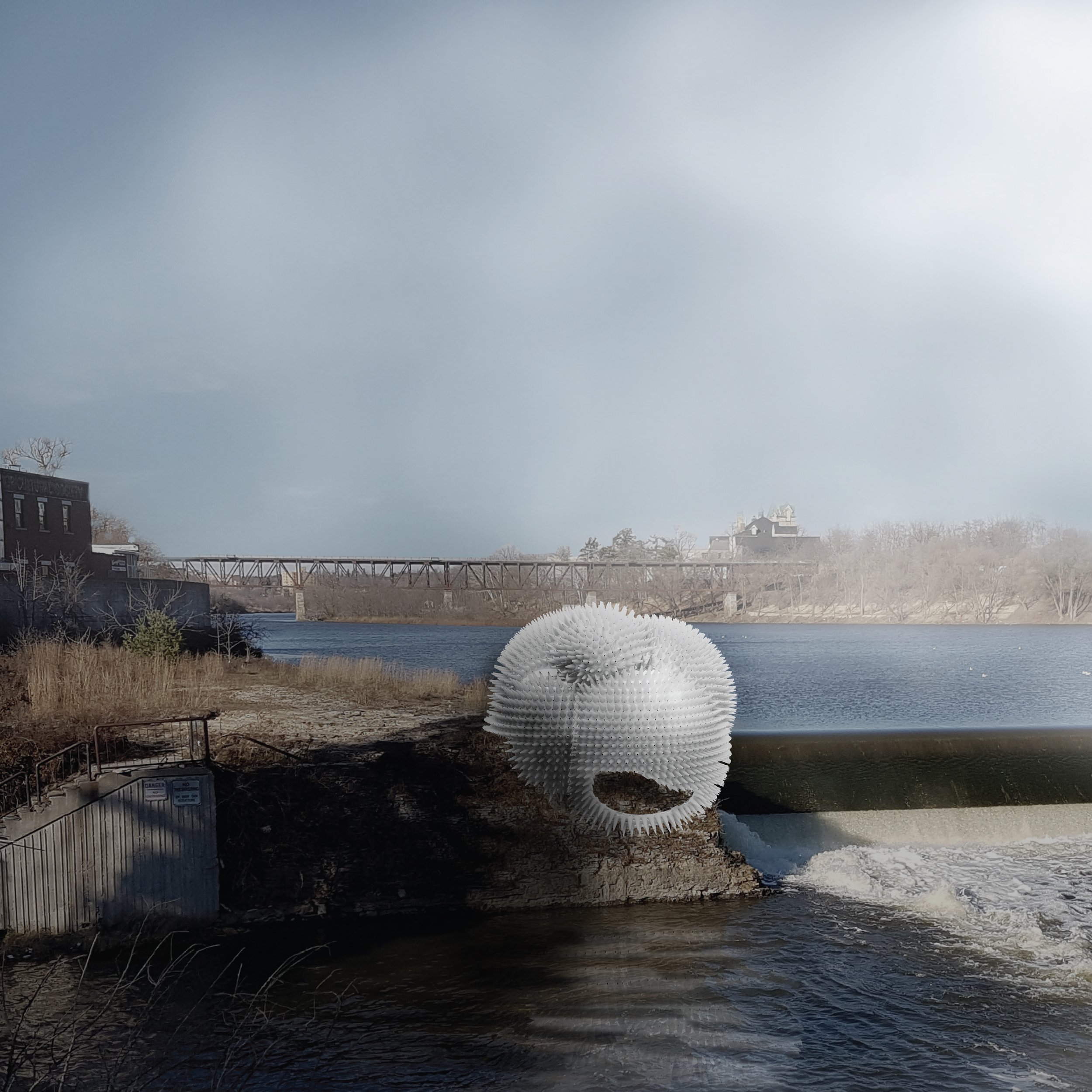Parasite was the final creation of the ParaMat studio led by Maya Przybylski. Working with Alice Huang, we chose a site near the school on the Grand River and decided to experiment with the shaping of sound.
Building off the general principles of material systems that we explored in the Eggs project, we landed on a steel base form with a reused traffic pylon infill. It seems we ended up with pylons as a continuation of our previous experiments with plastic, but as a more readily repeatable and accessible unit that also happened to have acoustic benefits. Acoustics were one of the main concerns for the cladding, because we wanted to focus visitor’s ears on the sounds of the water rather than the sounds of traffic. The outside cones help to reflect unnecessary exterior sounds away, while openings allow them to pass through. Inside, the cones each have added reflectors so that the sound isn’t simply absorbed and deadened within the cones as well. These reflectors also allow the sound to be maximized at focal points, allowing visitors to experience the burble and the crashing of the water in the same spot.
Our model was created with laser cut and 3d printed parts. Unfortunately, the form is not ideal for printing, so we broke it into many small pieces to minimize stringing and bridging issues and assembled them after printing. The lasercut base was created with topographical data sculpted to more accurately reflect the condition of the site. Then, it was cut out of hundreds of pieces and hand assembled with pins for accurate alignment.
We also created a small structural model, using miniature pylons and small steel sections to recreate the shapes and bending that we wanted with the full scale model.
In collaboration with Alice Huang



















